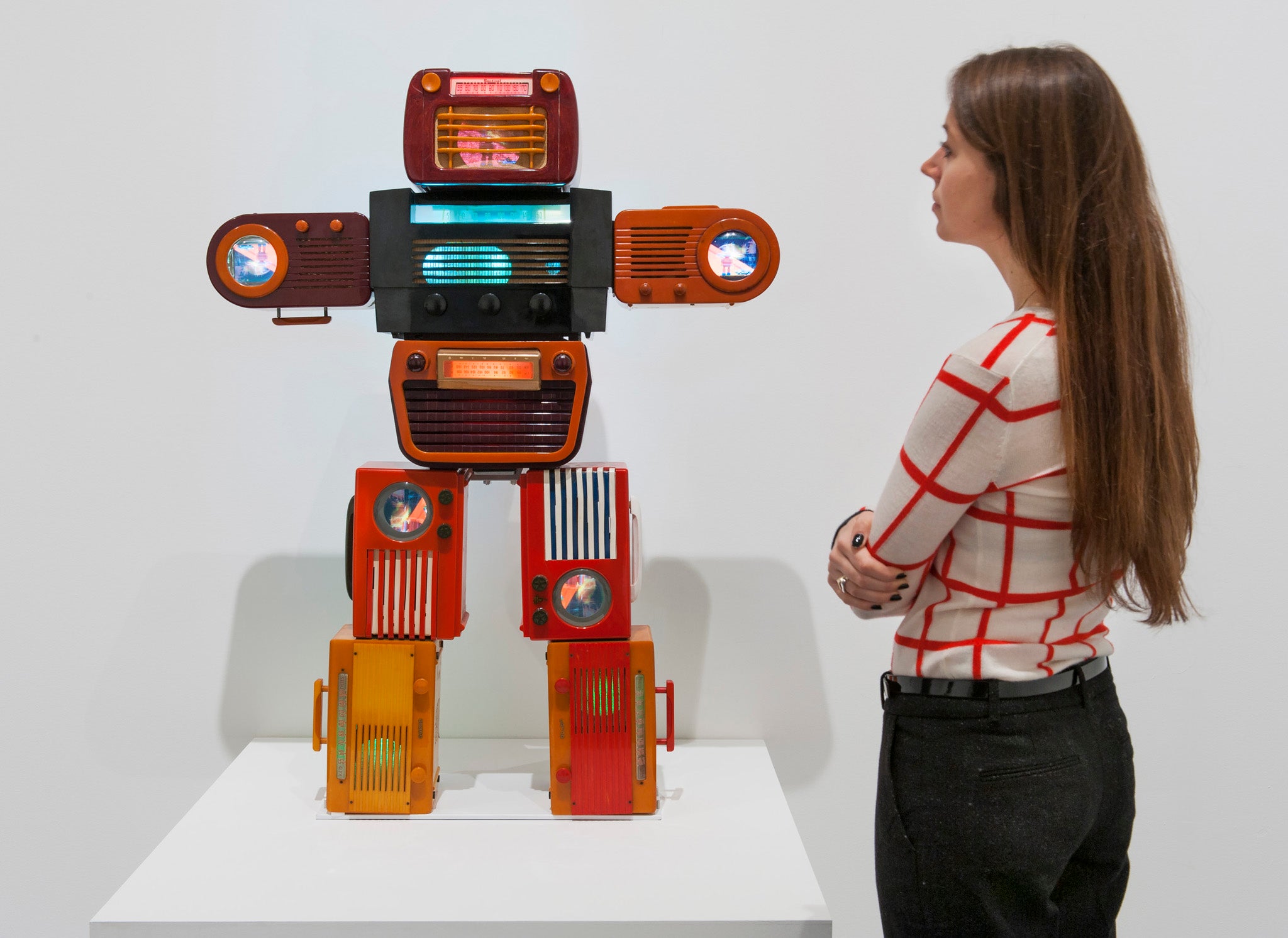Tate Modern unveils new acquisitions from Korean 'father of video art' bought after £6m Hyundai deal
Tate Modern has acquired nine key works by Nam June Paik, the Seoul-born inventor of video art, who died aged 73 in 2006

A series of pioneering works by the Korean “father of video art”, whose installations anticipated the YouTube age, will go on display at Tate Modern today, after being acquired by the institution.
A record £6 million, multi-year sponsorship deal with Korean carmaker Hyundai, has helped Tate Modern acquire nine key works by Nam June Paik, the Seoul-born inventor of video art, who died aged 73 in 2006.
Paik worked with radios, televisions, robotics and computers to explore humanity’s ever-changing relationship with technology.
The artist coined the phrase Electronic Superhighway in a 1994 work comprised of towering video screens and imagined that computer users would one day be able to post their own clips on a “Video Common Market”, pre-empting YouTube.
The Tate display, free to visitors today, marks a push to transform the gallery’s holdings of Asian art. Spanning 40 years of the artist’s career, they include Can Car 1963, an early sculpture created from a tin can, an electric motor and a pair of wheels. Bakelite Robot 2002 is a late work made by stacking vintage radios into the shape of a humanoid robot.
Also on show are some of Paik’s seminal video installations, which address contemporary issues of mass media and surveillance.
Nixon 1965-2002 uses electromagnetic coils to warp and distort footage of former US President Richard Nixon, while Three Eggs 1975-1982 is a CCTV triptych, in which an egg is watched by a video camera and transmitted live to a nearby monitor.
Alongside his sculptures and installations, a group of Paik’s works on paper have been donated to Tate by the artist’s family. The rarely-exhibited drawings in pencil, pastel and ink offer an insight into Paik’s working method and the development of his ground-breaking and experimental ideas.
Sook-Kyung Lee, curator of the display, said: “Paik was a visionary. He was fascinated by the advance of technology of the 60s and 70s and used his art to highlight how everyday life was changing with this innovation.”
Lee added: “He was the first to use home video equipment as tools for art. Paik pioneered the integration of ordinary everyday objects with the cutting edge. He was always experimenting with unexpected materials which have now become commonplace in art.”
The Paik collection was acquired through gifts from the artist’s family, with the support of Hyundai, Tate’s Asia Pacific Acquisitions Committee and Tate Americas Foundation.
Lee said that although Hyundai was keen to promote Korean art through its sponsorship, curatorial decisions remained firmly with the Tate directors.
The Hyundai agreement, which runs until 2025, will see the company pay for ongoing commissions in the Turbine Hall, and is the largest contract ever signed by the museum.
Chris Dercon, Director, Tate Modern said: “Nam June Paik was one of the great pioneers of video art and I am delighted to see his work on display here at Tate Modern.
This acquisition is a great example of Tate’s increasingly diverse collection, showcasing the most exciting art from around the world in a wide range of media.”
Join our commenting forum
Join thought-provoking conversations, follow other Independent readers and see their replies
Comments